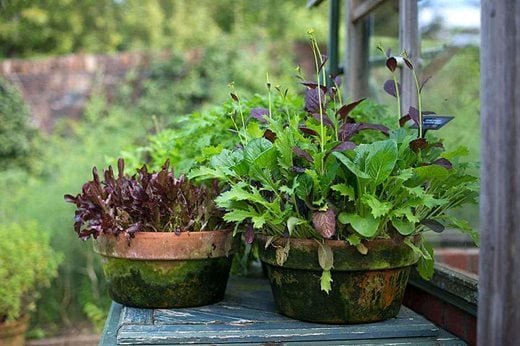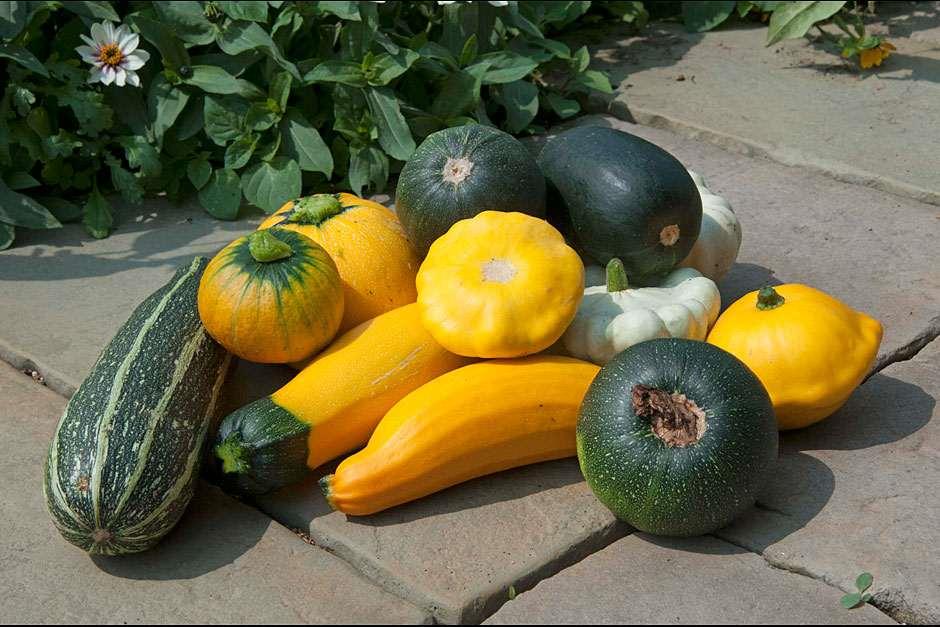Planning a vegetable garden? Follow the expert advice here to make your vegetable growing a success
 Make the most of space
Make the most of space
Unless you have a large vegetable plot or even an allotment it makes sense to plan what types of vegetables you want to grow; gardens are generally too small and there's usually not enough time for most people to grow everything that they want or need.
It makes sense to grow your favourite vegetables and those where freshness is important. But early potatoes, spring onions and baby carrots with their tops on are delicious, and their flavour and texture deteriorates with every hour that passes after harvest.
Don't forget that where room is at a premium, you can grow most vegetables in containers.
Cost also enters into it. Leeks, for example, are often relatively costly to buy, but onions are cheap, so growing your own leeks is more attractive than raising onions.
Once you have listed what you like, decide how much of each you need, bearing in mind that produce that cannot be stored might end up in the compost bin. It is usually better to top up with bought produce than have to discard plants that you have spent time and money nurturing, so erring on the side of caution is better than growing too much.
Soil type
Soil has an influence. If you have a cold, clay soil (which takes longer to warm up in spring) then early crops are tricky, but later crops should be abundant and need relatively little watering. Using raised beds can help the soil warm up quicker.
Light soils, on the other hand, are great for early crops, but can be dry and unproductive later. There is no point struggling against the nature of your soil, so if you have a clay soil consider raising early crops in containers and if yours is a light soil, grow late-maturing crops in shallow trenches that are easy to fill with water for ease of irrigation.
Consider how much time and effort you want to devote. Tomatoes, for example, are popular plants but they need staking and training, protecting from blight and only crop outdoors for a few weeks in late summer. Therefore six plants giving fruits of the best flavour might be enough. In contrast, runner beans crop abundantly over a long period.
On the other hand asparagus almost looks after itself; once you have established a bed there is only some routine maintenance to do each year in exchange for up to 10 years of abundant crops of this sumptuous vegetable.
You might also want to avoid peaks of work. It makes sense to choose crops that need sowing, planting, thinning and weeding over a long period of time rather than be faced with rush periods. Timeliness is very important in growing vegetables and doing things as little as two weeks late can lead to disappointing results.
_PUB0020904.jpg?width=520&height=346) Finally, consider the timing of harvest - late-summer Mediterranean crops such as peppers, aubergines, courgettes and tomatoes are deservedly popular, but you might want to use the space for a succession of crops through the year, so aim for spring, summer, autumn and winter crops.
Finally, consider the timing of harvest - late-summer Mediterranean crops such as peppers, aubergines, courgettes and tomatoes are deservedly popular, but you might want to use the space for a succession of crops through the year, so aim for spring, summer, autumn and winter crops.
Fortunately, vegetable seed suppliers produce useful catalogues and websites to help source seeds and choose cultivars (cultivated varieties). As seeds can be stored, it is worth buying in as wide a selection of crops as you have room for, saving surplus seed for future years. To help choose vegetables we test and publish lists of recommended vegetables (353kB pdf) which have the RHS Award of Garden Merit.
When your seeds arrive make a seed store, using a box with dividers for each month, and place the seeds in the appropriate month so they are easy to find when the time comes to start sowing.
Unfortunately, recommendations seldom mention flavour or suitability for particular soils, sites and districts. So although recommended lists are a good place to start, it makes sense to try things that take your fancy and even ask local growers for suggestions. Swopping seeds and plants is another avenue to explore.
Once you have decided what you want to grow and when, the next task is to fit them into the space available. Usually some things have to be left out. However, remember that with some careful planning you can intercrop (grow another crop in the space between the rows) and catch crop (a fast-growing crop that is grown simultaneously with, or between, successive plantings of a main crop and is harvested before the main crop) without disturbing your crop rotation. Planning on scaled paper should help avoid overcrowding later.
Plan your own kitchen garden
Gardener designer, Jack Wallington, shares his techniques for planning your own kitchen garden and shows you how to start sowing seeds indoors.

